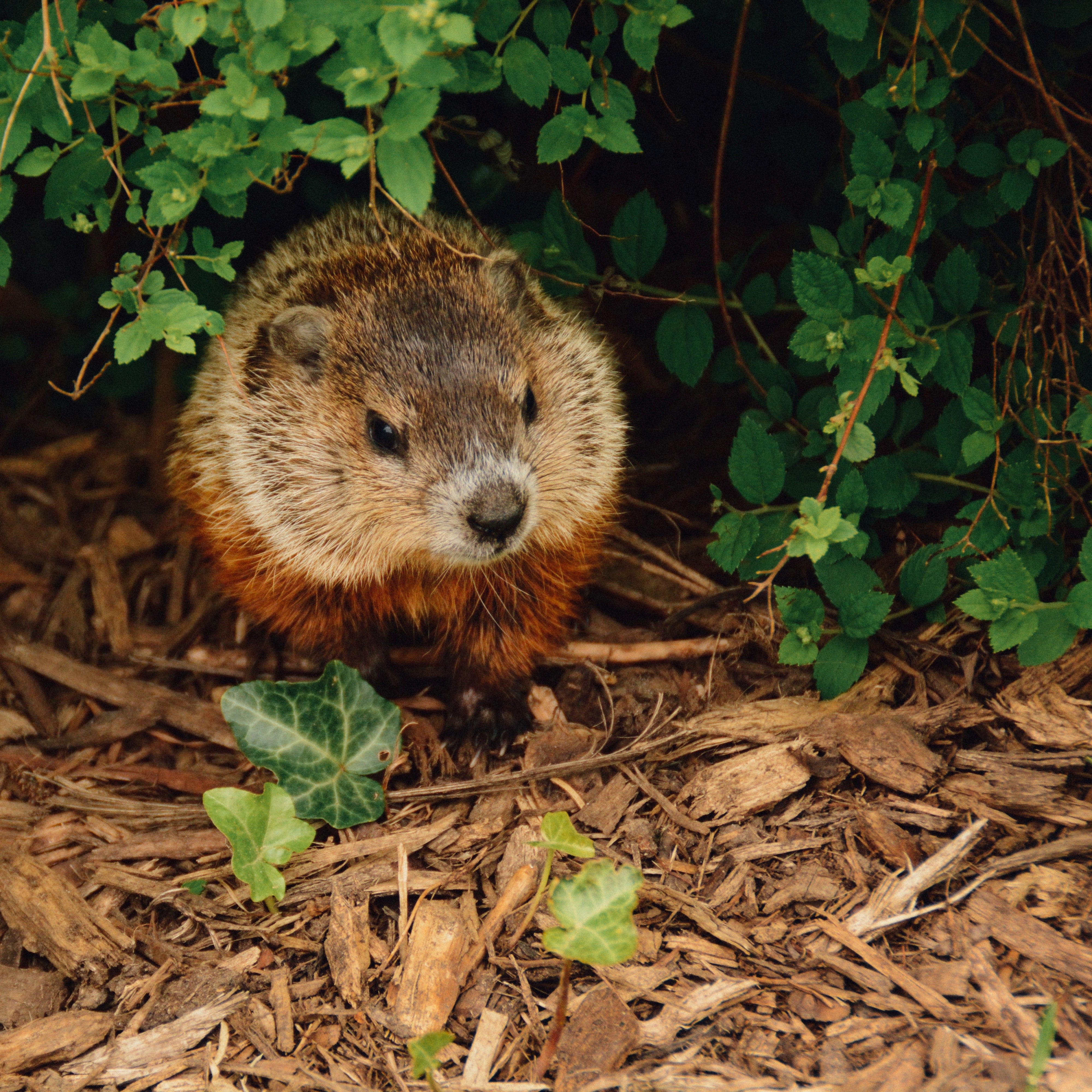
Groundhogs — We Don’t Have Them!
Photo by Abigail Lynn
We haven’t made up our minds if the title statement is a good or bad thing (we’re mostly leaning towards good), but if we did have them, you know we’d be reenacting Punxsutawney’s traditional celebration. Do you know the origins of Groundhog Day? If so, leave your comments below (you may just get something for your incredible knowledge)! BTW, Phil saw his shadow today and he has about a 39% success rating since 1887.
Moving on, for many farmers throughout the United States and in Canada, groundhogs are a true terror — we have friends in the south who had a groundhog come through and eat one hole in the bottom of each watermelon. Why, who knows? Maybe to figure out which taste which was the best?! Needless to say, those watermelons could not be sold, thus loosing that farm an incredible amount of income. We don’t know exactly what type of damage they could bring upon blueberry plants, but they are sneaky and would likely come up with a way to wreak havoc on the plants.
Though we don’t have groundhogs, we do have our own pests and the main two culprits have wings! Can you guess or do you know what they are? Toss some out there in the comment section (again, you may just get something for your incredible knowledge). We will reveal the answer in a new blog post tomorrow (is there an equivalent to Boxing Day for Groundhog’s Day? If so, stay tuned until then).
…
Some fun facts about groundhogs (we’re into trivia, so we love to share):
- Groundhogs are commonly called a number of things, some of our favorites are: whistlepigs, woodchucks, groundpigs, thickwood badgers, and weenusks.
- Groundhogs are vegetarians! They eat grasses, other green plants, fruits, and the bark, and buds of trees (so that’s how they’d get us and also how they likely got their nickname of a woodchuck). They feed heavily in summer (hello watermelon!) and early fall, accumulating fat reserves for their winter hibernation. According to the National Wildlife Federation (NWF), a groundhog may pack in more than a pound of vegetation at one sitting during the warm season. (Just so you know, this is equivalent to a 150-pound man eating a 15-pound steak.)
- Groundhogs court! Despite their intense hibernation habits, male groundhogs may wake up early to start looking for potential mates. They typically roam within 2–3 acres outside of their own burrow. According to NWF, mating does not take place at this time. The visits likely allow the animals to get to know each other before breeding in March.
- Groundhogs whistle at potential mates, hence their nickname “whistlepigs.” (Why don’t we call it a whistlepig-call rather than a cat-call?)
- Groundhogs build intricate homes. Their underground burrows include multiple “rooms” with different purposes, including a sleeping chamber, a nursery chamber, and a waste chamber. It can stretch anywhere from eight to 66 feet long.
- Even if groundhogs did live in our area, they’d be in real trouble! Birds of prey, among other predators, love to get these creatures.
For more fun facts and as our citation, visit PBS.org’s groundhog page!
